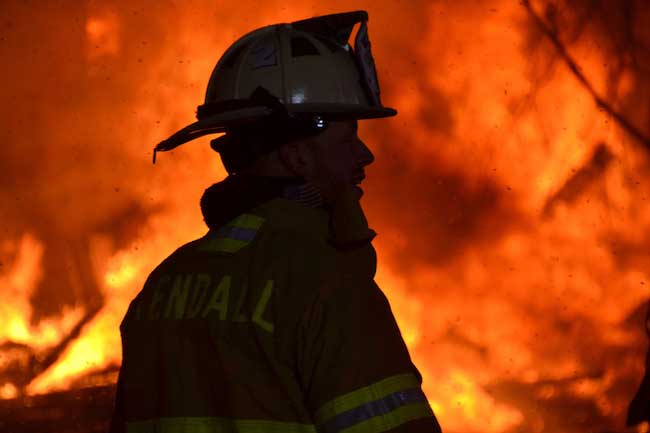State has new protocols to reduce firefighters’ exposure to toxic contaminants
Press Release, New York State Division of Homeland Security and Emergency Services
The New York State Division of Homeland Security and Emergency Services’ Office of Fire Prevention and Control today announced a new effort to help protect the state’s firefighters and their families from the threat of cancer.
Studies have shown firefighters are experiencing cancer at higher rates than the general public, largely due to their exposure to an increased level of toxins found in smoke at structure and other fires. In order to ensure New York’s firefighters are not only aware of this threat, but know how to limit their own risk, State Fire officials developed basic protocols for decontaminating firefighting gear following a response call and will be traveling throughout the state to promote their use by firefighters.
Research has shown that the simple and inexpensive steps being promoted as part of this effort can reduce the exposure of firefighters and their families to toxins and other carcinogens by up to 85 percent.
“As research continues to demonstrate the elevated risk of cancer the brave men and women of New York’s fire service face, it’s critical we ensure they have the tools and information they need to protect themselves and their families,” New York State Homeland Security and Emergency Services Commissioner Patrick A. Murphy said. “Thanks to the tireless efforts our dedicated staff in the Office of Fire Prevention and Control, we haven’t only found simple ways to greatly reduces one’s exposure to carcinogens, we are bringing this information directly to our local partners throughout the state.”
“State Fire is taking the lead in New York to help firefighters make the changes necessary for protecting their health,” said New York State Fire Administrator Francis Nerney. “Smoke from every fire contains toxic chemicals linked to cancer and by taking basic steps to educate our brothers and sisters in the fire service, we can begin to change the culture and get the safe behaviors we are promoting into action.”

These firefighters battle the fire in Holley on Jan. 5. The fire spewed smoke from a house at the corner of routes 237 and 31.
If firefighting turnout gear is not decontaminated properly after a fire, these firefighters can carry the harmful chemicals to their firehouses and homes, cross-contaminating co-workers and family members. According to two studies conducted by the National Institute for Occupational Safety and Health, firefighters are being diagnosed with cancer at a 9 percent higher rate than the general public, and are experiencing cancer-related deaths at a 14 percent higher rate.
To combat these trends, the State Office of Fire Prevention and Control has established some basic, inexpensive protocols which will go a long way in limiting firefighters’ exposure to the harmful chemicals commonly found in smoke. Under these recommended protocols:
• Firefighters are rinsed off with a garden hose at low pressures to remove large contaminates upon completion of their work at the scene.
• They are then sprayed with a liquid dish soap and water solution and scrubbed with soft bristled brushes
• The firefighter is rinsed again with the low-pressure garden hose and then washes their helmet
• Finally, the gear is bagged for transport to prevent contamination from spreading and subsequently washed following their individual department’s policy.
Throughout the next year, state experts will travel across the state to bring these protocols directly to firefighters in educational sessions at local fire departments. At each session, firefighters will view a live demonstration of the new decontamination protocols, a new educational video that details the protocols and the risks facing firefighters and have an opportunity to ask state experts any questions they may have. Additionally, the State Office of Fire Prevention and Control is expanding all firefighting classes and trainings it delivers by now including a section on cancer awareness and prevention education.
New sessions are being scheduled on a rolling basis. If you are a firefighter and looking for an educational session near you, or would like to host one at your department, view the State Office of Fire Prevention and Control’s training calendar, or contact your County’s Fire Coordinator.
“We can decrease the exposure to the dangers we face if we want to,” said New York State Association of Fire Chiefs Director Timothy Boel. “Decontamination is such an easy task to accomplish why would you want to expose yourself, other personnel or your family to the dangers we face in our job to protect others. Take the time, energy and effort to make the job you enjoy and have chosen to do the safest it can be.”





































































